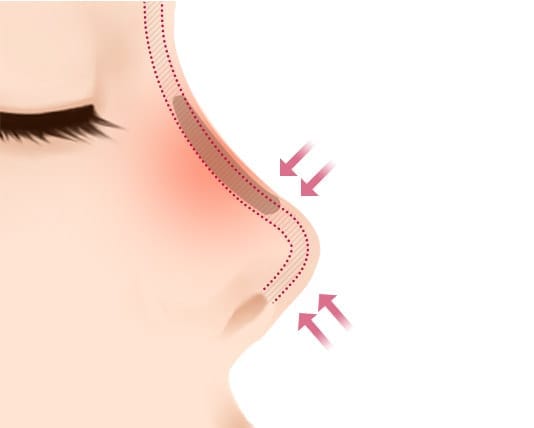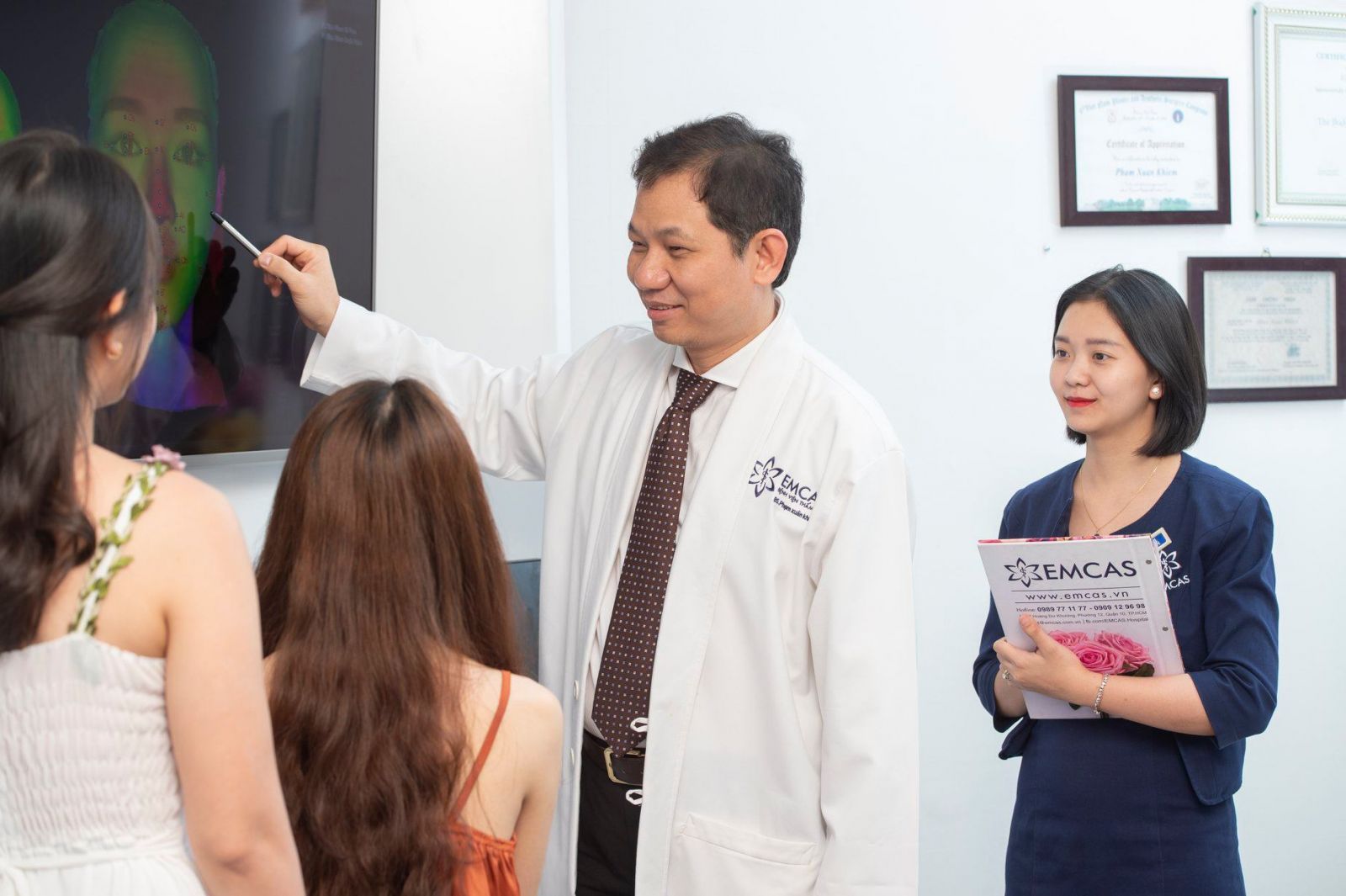Why does a Rhinoplasty fail?
Rhinoplasty failure occurs in only 5- to 10 percent of cases. A rhinoplasty failure could be the result of surgery done by an inexperienced surgeon, an excessively vigorous surgery or surgery that was not aggressive enough, such as:
- Poor pre-operation planning
- Lack of precision in placing incisions
- Excessive extraction of cartilage and bone from the bridge of the nose
- Damage to nasal tip cartilage, or rejection
- Excessive extraction of septal cartilage (the septum is the wall of skin dividing the nostrils)
- Unnecessary or poor use of skin grafts
Fail Rhinoplasty - What to do next?
A nose job failure sounds like a frightening thing. And, thankfully, if you do experience a failed rhinoplasty, revision rhinoplasty is an option to correct an unsatisfactory result from prior surgery.
If you have had prior nasal surgery elsewhere that has not met your specifications, either in terms of appearance or function, our surgeon will discuss with you the issue of rhinoplasty failure, and how to perform a corrective surgery that achieves your goals.
What is Corrective/ revision rhinoplasty
Corrective/ revision rhinoplasty is a surgical procedure that is performed on a nose previously operated to repair its shape and internal function. It is important to note that this procedure is a much more complex procedure than primary rhinoplasty surgery because of existing scar tissue and the vagaries of the healing process.
WHY CHOOSE EMCAS

 We perform thousands of procedures every year, helping patients to achieve the look they’ve always wanted. Our surgeons offer in-depth client evaluations to address rhinoplasty concerns and questions
We perform thousands of procedures every year, helping patients to achieve the look they’ve always wanted. Our surgeons offer in-depth client evaluations to address rhinoplasty concerns and questions
 We offer a wide range of cosmetic surgery procedures which can enhance the way you look. Some of our most popular cosmetic procedures include breast enlargement/ augmentation, buttock enlargement, liposuction, tummy tuck, rhinoplasty surgery or face lift.
We offer a wide range of cosmetic surgery procedures which can enhance the way you look. Some of our most popular cosmetic procedures include breast enlargement/ augmentation, buttock enlargement, liposuction, tummy tuck, rhinoplasty surgery or face lift.
 Highly experienced surgeons: Cosmetic or plastic surgery is one that you will live with for the rest of your life. The two most important factors of successful plastic surgery are selecting the right hospital and the right surgeon, who is held to the highest standards of education, training, safety and ethics.
Highly experienced surgeons: Cosmetic or plastic surgery is one that you will live with for the rest of your life. The two most important factors of successful plastic surgery are selecting the right hospital and the right surgeon, who is held to the highest standards of education, training, safety and ethics.
 State-of-the-art facilities: They include hospitals, operating room, outpatient care centers and specialized care centers in the privacy and sterility.
State-of-the-art facilities: They include hospitals, operating room, outpatient care centers and specialized care centers in the privacy and sterility.
The American advanced technology – VECTRA 3D IMAGING SYSTEM will:
+ Capture body images in ultra-high resolution 3D
+ Automated measure, help you understand your current condition
+ Help you to visualize what the potential outcome of your surgery will be.
 Experienced, caring support: We are chosen by thousands of patients to provide them with the best care, from their consultation to surgery and throughout their entire aftercare. Our medical team and administration staffs at EMCAS are here to support you in every step of your journey.
Experienced, caring support: We are chosen by thousands of patients to provide them with the best care, from their consultation to surgery and throughout their entire aftercare. Our medical team and administration staffs at EMCAS are here to support you in every step of your journey.
 We understand that your decision to go ahead with our high quality cosmetic or weight loss surgery shouldn’t be restricted by cost. That’s why we’ve made it easy to estimate the cost of your treatment during consultation and spread the cost with flexible payment options to suit you.
We understand that your decision to go ahead with our high quality cosmetic or weight loss surgery shouldn’t be restricted by cost. That’s why we’ve made it easy to estimate the cost of your treatment during consultation and spread the cost with flexible payment options to suit you.
 Up to 80% of patients at EMCAS have had cosmetic or weight loss surgery after consultation and can share their experiences with you.
Up to 80% of patients at EMCAS have had cosmetic or weight loss surgery after consultation and can share their experiences with you.


![]() Experienced, caring support: We are chosen by thousands of patients to provide them with the best care, from their consultation to surgery and throughout their entire aftercare. Our medical team and administration staffs at EMCAS are here to support you in every step of your journey.
Experienced, caring support: We are chosen by thousands of patients to provide them with the best care, from their consultation to surgery and throughout their entire aftercare. Our medical team and administration staffs at EMCAS are here to support you in every step of your journey.![]() We understand that your decision to go ahead with our high quality cosmetic or weight loss surgery shouldn’t be restricted by cost. That’s why we’ve made it easy to estimate the cost of your treatment during consultation and spread the cost with flexible payment options to suit you.
We understand that your decision to go ahead with our high quality cosmetic or weight loss surgery shouldn’t be restricted by cost. That’s why we’ve made it easy to estimate the cost of your treatment during consultation and spread the cost with flexible payment options to suit you.![]() Up to 80% of patients at EMCAS have had cosmetic or weight loss surgery after consultation and can share their experiences with you.
Up to 80% of patients at EMCAS have had cosmetic or weight loss surgery after consultation and can share their experiences with you.

